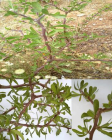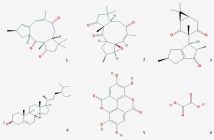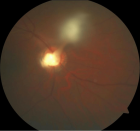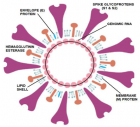Abstract
Mini Review
Phytochemical and pharmacological properties of Jatropha dioica
Diana Isela Araujo-Espino, Blanca Patricia Lazalde-Ramos* and Ana Lourdes Zamora-Perez
Published: 10 February, 2023 | Volume 7 - Issue 1 | Pages: 010-013
Jatropha dioica sesse ex cerv is a specie native to Mexico and Texas, commonly known as “sangre de drago“, its name is due to its colorless juice turning dark at exposure to the wind. This mini-review aims to collect information about the phytochemical and pharmacological properties of Jatropha dioica. The phytochemicals identified are diterpenes, (citlalitrione, jatrophone and riolozatrione), β-sitosterol, oxalic acid and ellagic acid. The stems, whole plant, or the root of J. dioica in traditional medicine are used to avoid hair loss, as an antibacterial, and antiviral, to strengthen teeth, and to heal some injuries among others uses. Among the biological activities attributed to Jatropha dioica are found in antiviral activity, antifungal, antimicrobial, chemopreventive, anti-hyperglycemic and cytotoxic. However, the little information about the chemical composition of this species and the scarce scientific studies validating its pharmacological properties make J. dioica an interesting species to study.
Read Full Article HTML DOI: 10.29328/journal.jpsp.1001098 Cite this Article Read Full Article PDF
Keywords:
Jatropha dioica sessé ex cerv; Phytochemicals properties; Biological activities; Ethnomedicinal uses
References
- Núñez E. Plantas medicinales de Costa Rica y su folclore. San José: Universidad de Costa Rica 279. 1975.
- Annan K, Houghton PJ. Antibacterial, antioxidant and fibroblast growth stimulation of aqueous extracts of Ficus asperifolia Miq. and Gossypium arboreum L., wound-healing plants of Ghana. J Ethnopharmacol. 2008 Sep 2;119(1):141-4. doi: 10.1016/j.jep.2008.06.017. Epub 2008 Jun 27. PMID: 18638536.
- Steinmann VW. Diversidad y endemismo de la familia Euphorbiaceae en México. Acta Botanica Mexicana. 2002; 61-93.
- Manzanero G, Flores-Martínez A, Sandoval-Zapotitla E, Bye-Boettler R. Etnobotánica de siete raíces medicinales en el mercado de sonora de la ciudad de méxico. Polibotánica. 2009; 191-228.
- Fresnedo J, Orozco-Ramírez Q. Diversity and distribution of genus Jatropha in Mexico. Genetic Resources and Crop Evolution. 2013; 60(3):1087-1104.
- Cházaro M. Antología botánica del occidente de México: Universidad de Guadalajara, Departamento de Geografía y Ordenación Territorial. 2002; 1-58.
- Rzedowski J, de Rzedowski GC. The phanerogam flora of the Valle de Mexico. Volume I: Compania Editoria Continental, SA. 1979; 1-50.
- Argueta A, Vázquez MCG. Atlas de las plantas de la medicina tradicional mexicana: Instituto Nacional Indigenista. 1994;1.
- Barba A, Hernández D, Cerda L. Plantas útiles de la región semiárida de Aguascalientes. Universidad Autónoma de Aguascalientes México. 2003; 13-199.
- Filardo S, Zúñiga A, Martínez BR. The success of the Autonomous University of the State of Hidalgo in linking and transferring technology in the production of toiletries (shampoos and creams) and food (jams) to indigenous groups, in the Chemical Research Center. April 11, 2015. http://www.foroconsultivo.org.mx/eventos_realizados/competitividad_cuatro/ponencias/mtro_%20filardo.pdf.
- Flores J, Jurado E. Are nurse-protégé interactions more common among plants from arid environments? Journal of Vegetation Science. doi: 10.1111/j.1654-1103.2003.tb02225.
- Sosa M, Galarza JL, Lebgue T, Soto R, Puga S. Clasificación de las comunidades vegetales en la Región Arida del Estado de Chichuahua, México. Ecología Aplicada. 2006; 5:53-9.
- Sánchez A. Clasificación fisonómica de la vegetación de la sierra de catorce, San Luis Potosí, a lo largo de un gradiente altitudinal. 2003; 1-89.
- Martínez J. Determinación del estado actual de cinco especies de cactáceas amenazadas del estado de Tamaulipas, México. In: CONABIO. 1998; 1-5.
- Villarreal AM, Dominguez XA, Williams HJ, Scott AI, Reibenspies J. Citlalitrione, a new diterpene from Jatropha dioica var. sessiliflora. J Nat Prod. 1988 Jul-Aug;51(4):749-53. doi: 10.1021/np50058a014. PMID: 3210021.
- Baskar AA, Ignacimuthu S, Paulraj GM, Al Numair KS. Chemopreventive potential of beta-Sitosterol in experimental colon cancer model--an in vitro and In vivo study. BMC Complement Altern Med. 2010 Jun 4;10:24. doi: 10.1186/1472-6882-10-24. PMID: 20525330; PMCID: PMC2887773.
- Vundru SS, Kale RK, Singh RP. β-Sitosterol induces G1 arrest and causes depolarization of mitochondrial membrane potential in breast carcinoma MDA-MB-231 cells. BMC Complement Altern Med. 2013 Oct 25;13:280. doi: 10.1186/1472-6882-13-280. PMID: 24160369; PMCID: PMC3819702.
- Silva AM, Brum RL, Calixto JB. The relaxant action of jatrophone in rat portal vein. A comparison with protein kinase C inhibitors. Life Sci. 1995;57(9):863-71. doi: 10.1016/0024-3205(95)02019-f. PMID: 7630315.
- Theoduloz C, Rodríguez JA, Pertino M, Schmeda-Hirschmann G. Antiproliferative activity of the diterpenes jatrophone and jatropholone and their derivatives. Planta Med. 2009 Nov;75(14):1520-2. doi: 10.1055/s-0029-1185834. Epub 2009 Jun 26. PMID: 19562659.
- Aguilera AF, Augur C, Prado-Barragan LA, Aguilar CN, Favela-Torres E. Extraction and analysis of ellagic acid from novel complex sources. Chemical Papers. doi: 10.2478/s11696-008-0042
- Zhang T, Chen HS, Wang LF, Bai MH, Wang YC, Jiang XF, Liu M. Ellagic acid exerts anti-proliferation effects via modulation of Tgf-β/Smad3 signaling in MCF-7 breast cancer cells. Asian Pac J Cancer Prev. 2014;15(1):273-6. doi: 10.7314/apjcp.2014.15.1.273. PMID: 24528038.
- Machado TDB, Leal IC, Amaral ACF, Santos K, Silva MGd, Kuster RM. Antimicrobial ellagitannin of Punica granatum fruits. Journal of the Brazilian Chemical Society. 2002;13:606-10.
- Notka F, Meier G, Wagner R. Concerted inhibitory activities of Phyllanthus amarus on HIV replication in vitro and ex vivo. Antiviral Res. 2004 Nov;64(2):93-102. doi: 10.1016/j.antiviral.2004.06.010. PMID: 15498604.
- Masamune A, Satoh M, Kikuta K, Suzuki N, Satoh K, Shimosegawa T. Ellagic acid blocks activation of pancreatic stellate cells. Biochem Pharmacol. 2005 Sep 15;70(6):869-78. doi: 10.1016/j.bcp.2005.06.008. PMID: 16023081.
- Silva-Mares D, Torres-López E, Rivas-Estilla AM, Cordero-Pérez P, Waksman-Minsky N, Rivas-Galindo VM. Plants from northeast Mexico with anti-HSV activity. Nat Prod Commun. 2013 Mar;8(3):297-8. PMID: 23678795.
- Adame-Miranda SJ, Granados-Guzmán G, Silva-Mares DA, Acevedo-Fernández JJ, Waksman-Minsky N, Salazar-Aranda R. Evaluation of antihyperglycemic activity of plants in northeast mexico. Cell Mol Biol (Noisy-le-grand). 2021 Jan 31;67(1):212-218. doi: 10.14715/cmb/2021.67.1.30. PMID: 34817346.
- Araujo-Espino DI, Zamora-Perez AL, Zúñiga-González GM, Gutiérrez-Hernández R, Morales-Velazquez G, Lazalde-Ramos BP. Genotoxic and cytotoxic evaluation of Jatropha dioica Sessé ex Cerv. by the micronucleus test in mouse peripheral blood. Regul Toxicol Pharmacol. 2017 Jun;86:260-264. doi: 10.1016/j.yrtph.2017.03.017. Epub 2017 Mar 23. PMID: 28342845.
- Morales-Velazquez G, Lazalde-Ramos BP, Gómez-Meda BC, Zúñiga-González GM, Ortiz-García YM, Gutiérrez-Hernández R, Guerrero-Velazquez C, Sánchez de la Rosa SV, Zamora-Perez AL. Genome Damage in Rats after Transplacental Exposure to Jatropha dioicaRoot Extract. Evid Based Complement Alternat Med. 2019 Nov 3;2019:2962950. doi: 10.1155/2019/2962950. PMID: 31885642; PMCID: PMC6925703.
- Richardson A. Plants of Deep South Texas: A field guide to the woody and flowering species. Texas A&M University Press. 2010; 457
- Secretary of Agriculture and Livestock, Rural Development, Fisheries and Food (SAGARPA). April 9 2015. http://www.cecader.gob.mx/boletin/b36/resenas/resena2.htm.
Figures:

Figure 1

Figure 2
Similar Articles
-
Food applications of Aloe species: A reviewAdamu Tizazu Yadeta*. Food applications of Aloe species: A review. . 2022 doi: 10.29328/journal.jpsp.1001070; 6: 024-032
-
Phytochemical and pharmacological properties of Jatropha dioicaDiana Isela Araujo-Espino,Blanca Patricia Lazalde-Ramos*,Ana Lourdes Zamora-Perez. Phytochemical and pharmacological properties of Jatropha dioica. . 2023 doi: 10.29328/journal.jpsp.1001098; 7: 010-013
Recently Viewed
-
Forest History Association of WisconsinEd Bauer*. Forest History Association of Wisconsin. J Radiol Oncol. 2024: doi: 10.29328/journal.jro.1001071; 8: 093-096
-
Synthesis of Carbon Nano Fiber from Organic Waste and Activation of its Surface AreaHimanshu Narayan*,Brijesh Gaud,Amrita Singh,Sandesh Jaybhaye. Synthesis of Carbon Nano Fiber from Organic Waste and Activation of its Surface Area. Int J Phys Res Appl. 2019: doi: 10.29328/journal.ijpra.1001017; 2: 056-059
-
Obesity Surgery in SpainAniceto Baltasar*. Obesity Surgery in Spain. New Insights Obes Gene Beyond. 2020: doi: 10.29328/journal.niogb.1001013; 4: 013-021
-
Tamsulosin and Dementia in old age: Is there any relationship?Irami Araújo-Filho*,Rebecca Renata Lapenda do Monte,Karina de Andrade Vidal Costa,Amália Cinthia Meneses Rêgo. Tamsulosin and Dementia in old age: Is there any relationship?. J Neurosci Neurol Disord. 2019: doi: 10.29328/journal.jnnd.1001025; 3: 145-147
-
Case Report: Intussusception in an Infant with Respiratory Syncytial Virus (RSV) Infection and Post-Operative Wound DehiscenceLamin Makalo*,Orlianys Ruiz Perez,Benjamin Martin,Cherno S Jallow,Momodou Lamin Jobarteh,Alagie Baldeh,Abdul Malik Fye,Fatoumatta Jitteh,Isatou Bah. Case Report: Intussusception in an Infant with Respiratory Syncytial Virus (RSV) Infection and Post-Operative Wound Dehiscence. J Community Med Health Solut. 2025: doi: 10.29328/journal.jcmhs.1001051; 6: 001-004
Most Viewed
-
Evaluation of Biostimulants Based on Recovered Protein Hydrolysates from Animal By-products as Plant Growth EnhancersH Pérez-Aguilar*, M Lacruz-Asaro, F Arán-Ais. Evaluation of Biostimulants Based on Recovered Protein Hydrolysates from Animal By-products as Plant Growth Enhancers. J Plant Sci Phytopathol. 2023 doi: 10.29328/journal.jpsp.1001104; 7: 042-047
-
Sinonasal Myxoma Extending into the Orbit in a 4-Year Old: A Case PresentationJulian A Purrinos*, Ramzi Younis. Sinonasal Myxoma Extending into the Orbit in a 4-Year Old: A Case Presentation. Arch Case Rep. 2024 doi: 10.29328/journal.acr.1001099; 8: 075-077
-
Feasibility study of magnetic sensing for detecting single-neuron action potentialsDenis Tonini,Kai Wu,Renata Saha,Jian-Ping Wang*. Feasibility study of magnetic sensing for detecting single-neuron action potentials. Ann Biomed Sci Eng. 2022 doi: 10.29328/journal.abse.1001018; 6: 019-029
-
Pediatric Dysgerminoma: Unveiling a Rare Ovarian TumorFaten Limaiem*, Khalil Saffar, Ahmed Halouani. Pediatric Dysgerminoma: Unveiling a Rare Ovarian Tumor. Arch Case Rep. 2024 doi: 10.29328/journal.acr.1001087; 8: 010-013
-
Physical activity can change the physiological and psychological circumstances during COVID-19 pandemic: A narrative reviewKhashayar Maroufi*. Physical activity can change the physiological and psychological circumstances during COVID-19 pandemic: A narrative review. J Sports Med Ther. 2021 doi: 10.29328/journal.jsmt.1001051; 6: 001-007

HSPI: We're glad you're here. Please click "create a new Query" if you are a new visitor to our website and need further information from us.
If you are already a member of our network and need to keep track of any developments regarding a question you have already submitted, click "take me to my Query."























































































































































